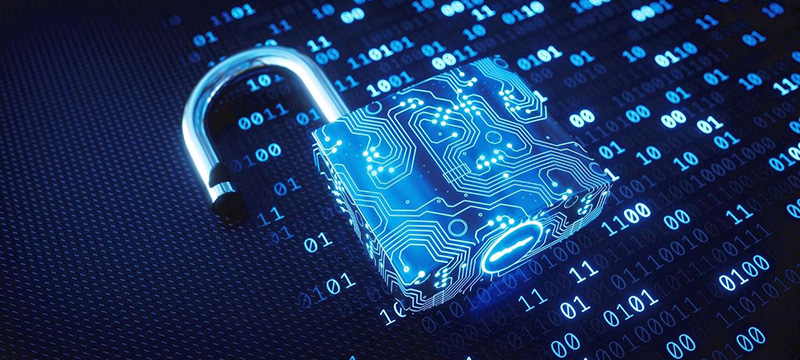In the ever-expanding universe of the Internet of Things (IoT), security is not just a feature but a foundational necessity. With billions of devices connected and communicating, the potential for data breaches, unauthorized access, and other cyber threats grows exponentially. In this context, IoT security protocols are essential to ensure that the communication between devices, and from devices to servers, remains confidential and tamper-proof. Here, we explore the current landscape of IoT security protocols, the challenges they face, and the future direction of securing IoT networks.
The Current State of IoT Security Protocols
IoT devices, ranging from consumer products like smart thermostats to industrial sensors monitoring critical infrastructure, are often built with convenience and cost-effectiveness in mind. However, this focus can sometimes come at the expense of robust security measures. The protocols governing the security of these devices are as varied as their applications.
1. Transport Layer Security (TLS) and Secure Sockets Layer (SSL): TLS and its predecessor, SSL, are cryptographic protocols designed to provide secure communication over a computer network. In the IoT space, TLS/SSL is commonly used to secure the connection between a device and a cloud server, ensuring that data remains private and integral.
2. Datagram Transport Layer Security (DTLS): For IoT devices that rely on UDP, which is common in real-time applications, DTLS offers a way to secure these communications. It is similar to TLS but adapted for datagram protocols.
3. Extensible Messaging and Presence Protocol (XMPP): XMPP is an open standard for message-oriented middleware based on XML. It offers a set of protocols for message-oriented communication with mechanisms for security.
4. Constrained Application Protocol (CoAP): CoAP is a specialized web transfer protocol for use with constrained nodes and networks in IoT. It can be used with DTLS to provide a secure communication channel.
5. Z-Wave and Zigbee: These are communication protocols for low-energy radio waves often used in home automation, with built-in security layers to encrypt messages between devices.
6. Message Queuing Telemetry Transport (MQTT): MQTT is a popular IoT publish-subscribe network protocol that can be secured with TLS.
Challenges Facing IoT Security Protocols
The challenges in IoT security are manifold, stemming from both the variety of devices and the complexity of the network architectures. Here are the key challenges:
1. Resource Constraints: Many IoT devices have limited computational resources and cannot support traditional web-grade encryption methods.
2. Diversity of Devices: The IoT ecosystem is vast, with a wide range of devices that have different capabilities and security needs.
3. Scalability: Security protocols must be able to scale effectively as billions of new devices come online.
4. Lifecycle Management: IoT devices often have long lifecycles, and security protocols must be updatable to respond to new threats over time.
5. Interoperability: With so many different protocols and manufacturers, ensuring that security measures are interoperable across devices and systems is a challenge.
Advanced Security Protocols for IoT
As the IoT industry evolves, so do the strategies to secure it. Here are some advanced protocols and techniques being developed and implemented:
1. Lightweight Cryptography: NIST is working on standards for lightweight cryptography intended for constrained devices, which will be more suitable for the IoT environment.
2. Public Key Infrastructure (PKI): PKI provides a scalable method for secure device authentication and encryption key distribution.
3. Elliptic Curve Cryptography (ECC): ECC provides the same level of encryption as RSA but uses smaller keys, which are more suitable for IoT devices.
4. Quantum-resistant algorithms: With the potential threat of quantum computing, there’s a growing focus on developing security algorithms that would be resistant to quantum attacks.
5. Secure Software Updates: Ensuring that devices can be securely updated is crucial for responding to vulnerabilities as they are discovered.
Implementing IoT Security Protocols
The implementation of robust security measures is as critical as the development of the protocols themselves. Here are key considerations for implementation:
1. Default Security: Devices should come with security features enabled by default, requiring little to no configuration from the user.
2. Regular Updates: Manufacturers must provide regular firmware updates to address security vulnerabilities and ensure devices stay secure over their lifespan.
3. User Education: Users should be informed about the importance of security and how to manage their devices securely.
4. Multi-layered Security: Security should be implemented in layers, including secure boot, transport layer security, secure storage, and intrusion detection systems.
The Future of IoT Security
Looking forward, the IoT industry must continue to prioritize security to protect against evolving cyber threats. Here are potential future developments:
1. AI and Machine Learning: These technologies can be used to detect anomalies in network behavior, potentially identifying and neutralizing threats in real-time.
2. Blockchain for IoT Security: Blockchain technology could enable secure, tamper-proof systems for IoT device authentication and firmware updates.
3. Integration of Security in IoT Standards: As new IoT standards are developed, integrating security as a core component will be crucial.
4. Government Regulation and Compliance: We may see more government regulation aimed at improving IoT security, similar to the GDPR for data protection.
5. Universal Security Standards: Efforts may be put toward creating universal security standards that can be applied across devices and industries.
Conclusion
The complexity of IoT security is significant, and the stakes are high. As the IoT continues to grow, effective security protocols must be developed and implemented to protect privacy and ensure the safe and reliable operation of connected devices. The future of IoT depends not just on innovation in connectivity and functionality but equally on the strength and adaptability of its security protocols. The journey toward a secure IoT ecosystem is ongoing, and it requires the concerted effort of manufacturers, software developers, security experts, and regulatory bodies.
The post Fortifying the Internet of Things: Navigating the Landscape of IoT Security Protocols appeared first on IoT Business News.
























